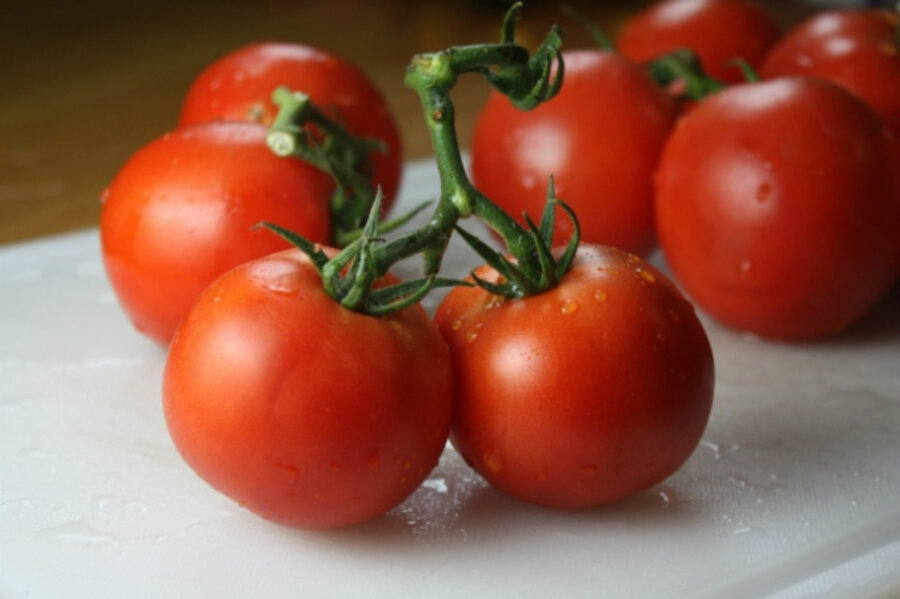How to peel and seed tomatoes
Loading...
Using fresh tomatoes in homemade sauces and soups often requires starting with peeled tomatoes with their seeds removed. Fortunately, peeling tomatoes is easier than you may expect. Just let a bit of boiling water do all of the work! Here are a few simple steps for easily peeling tomatoes.
Step 1: Start with beautifully ripe, seasonal tomatoes.
Step 2: Cut a small ‘X’ into the non-stem end of the tomato.
Note: It’s a good idea to use a paring knife to cut out the tough green stem end at this point. It will help the skin to slip off easier and will save you from removing it later.
Step 3: Bring a pot of water to a rolling boil.
Step 4: Insert the tomatoes into the water for about 1 minute.
Step 5: Remove the tomatoes using a slotted spoon and place in a bowl of ice water. The skin should be practically falling off on its own.
Step 6: Use your fingers to slide the skin from the tomato. If necessary, use a paring knife to remove any remaining peel.
Note: Use the paring knife to cut out the green stem end, if you haven’t already.
Step 7: Cut the tomatoes in half. Gently squeeze the tomatoes to remove the seeds. Use your clean fingers to remove the seeds from any small pockets.
For a pictorial step-by-step guide, go to The Gourmand Mom.






